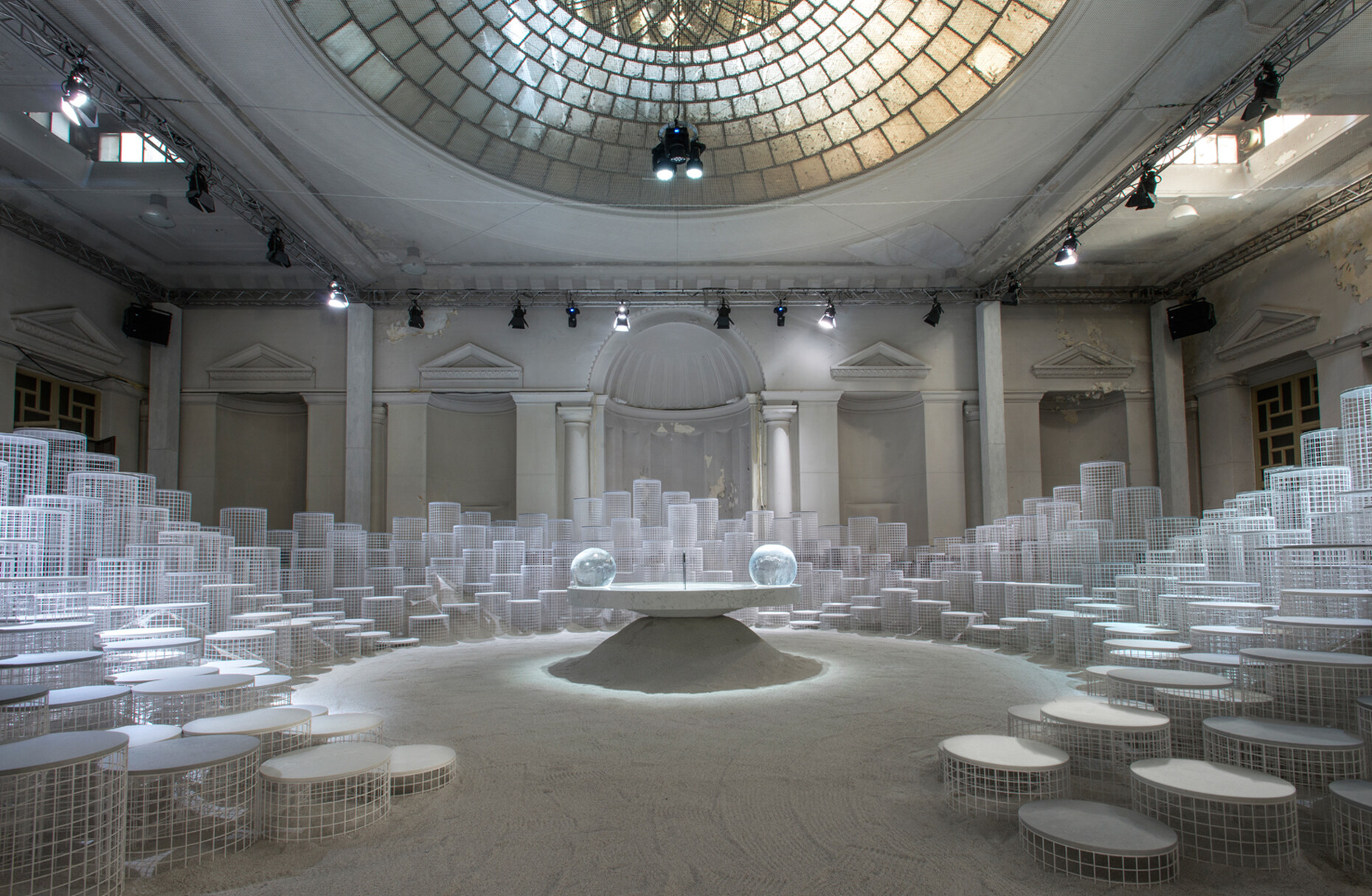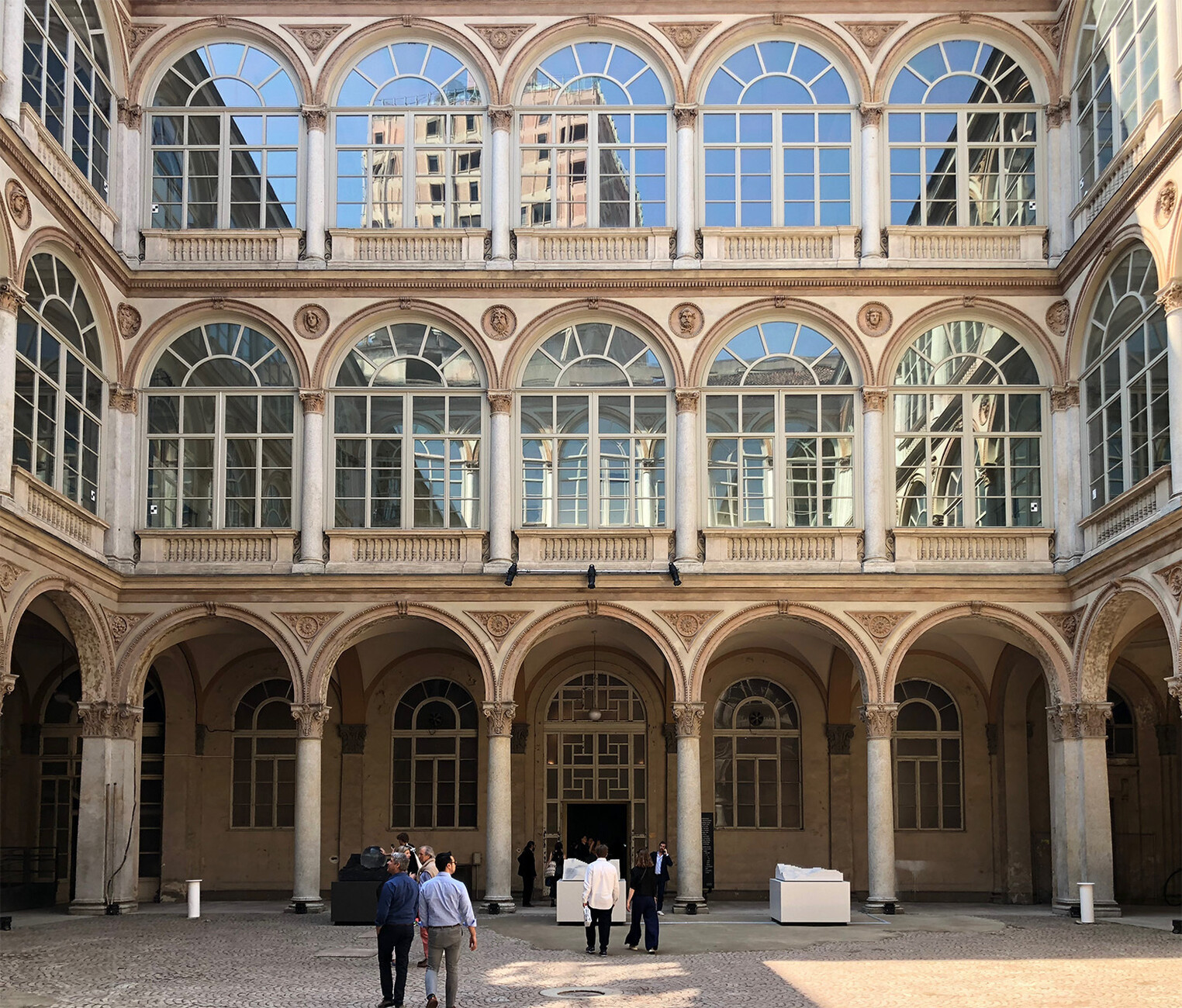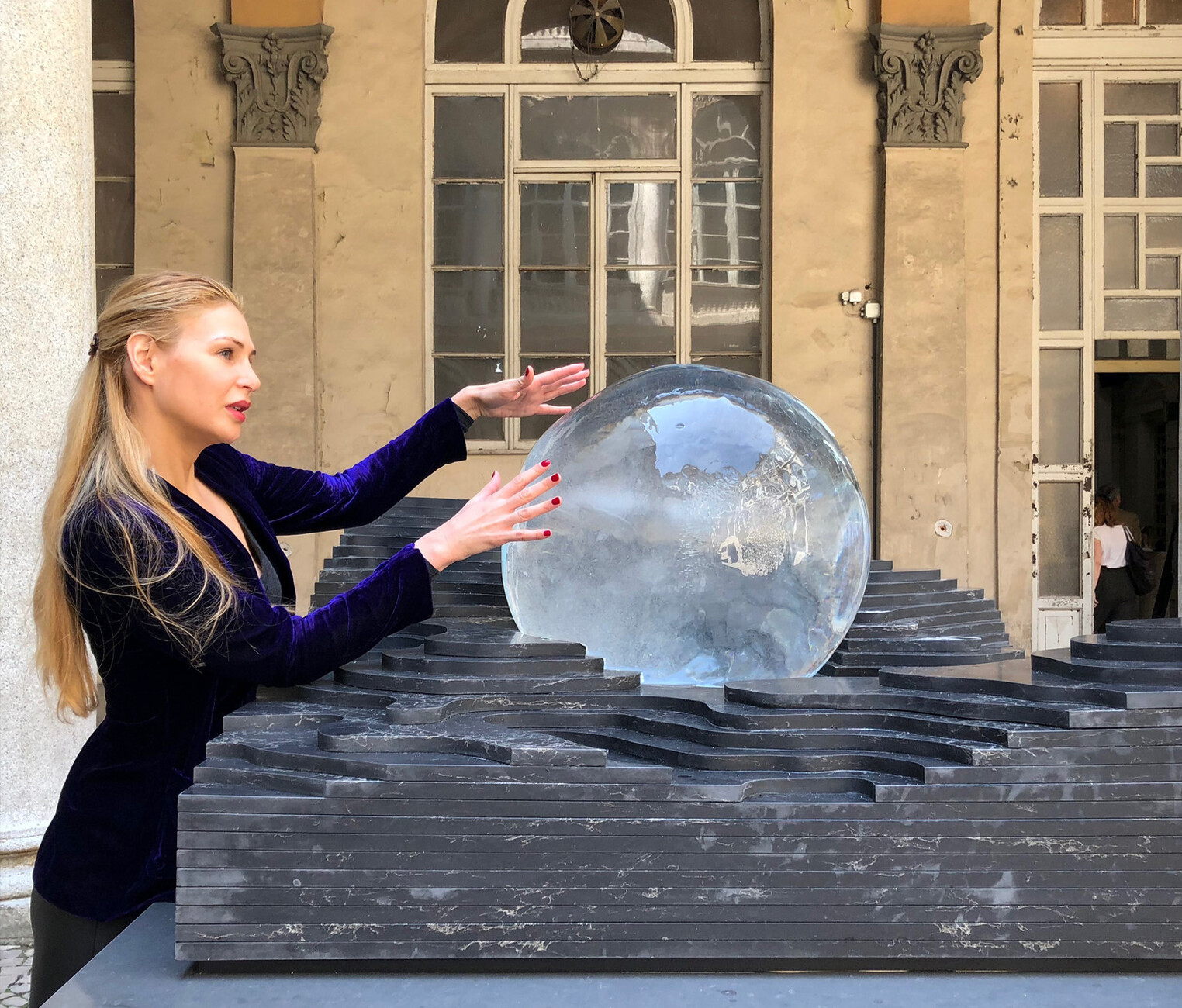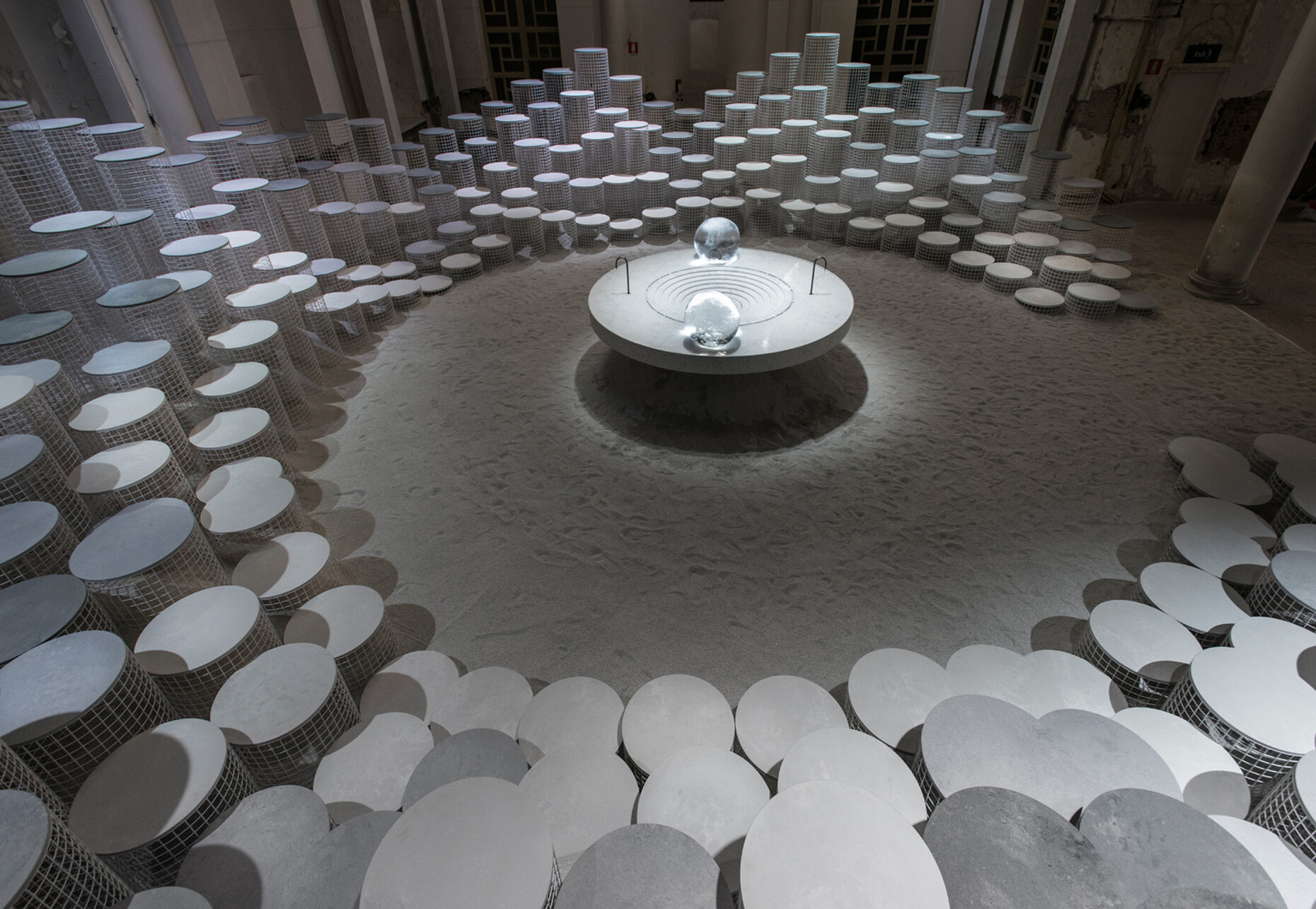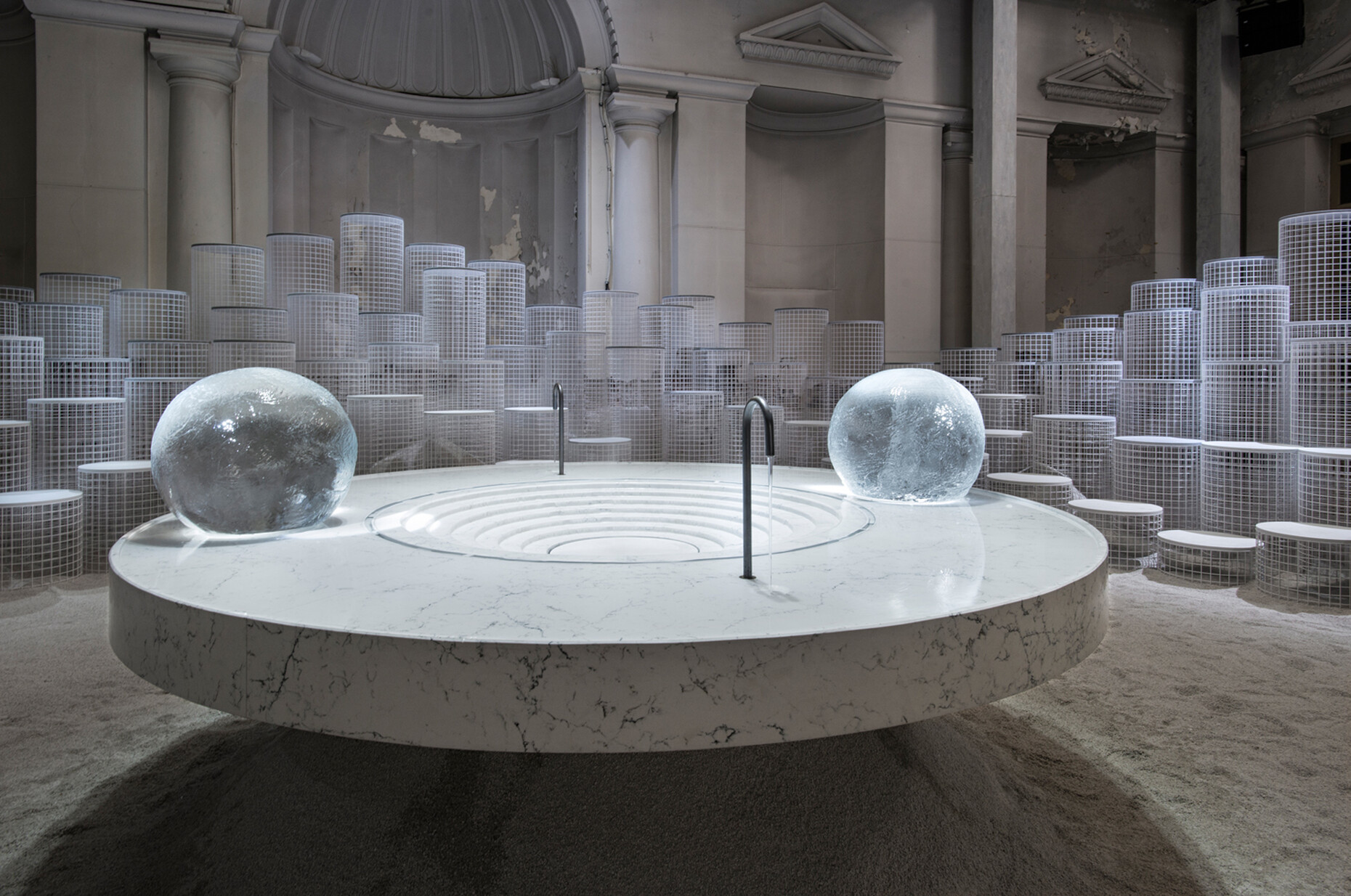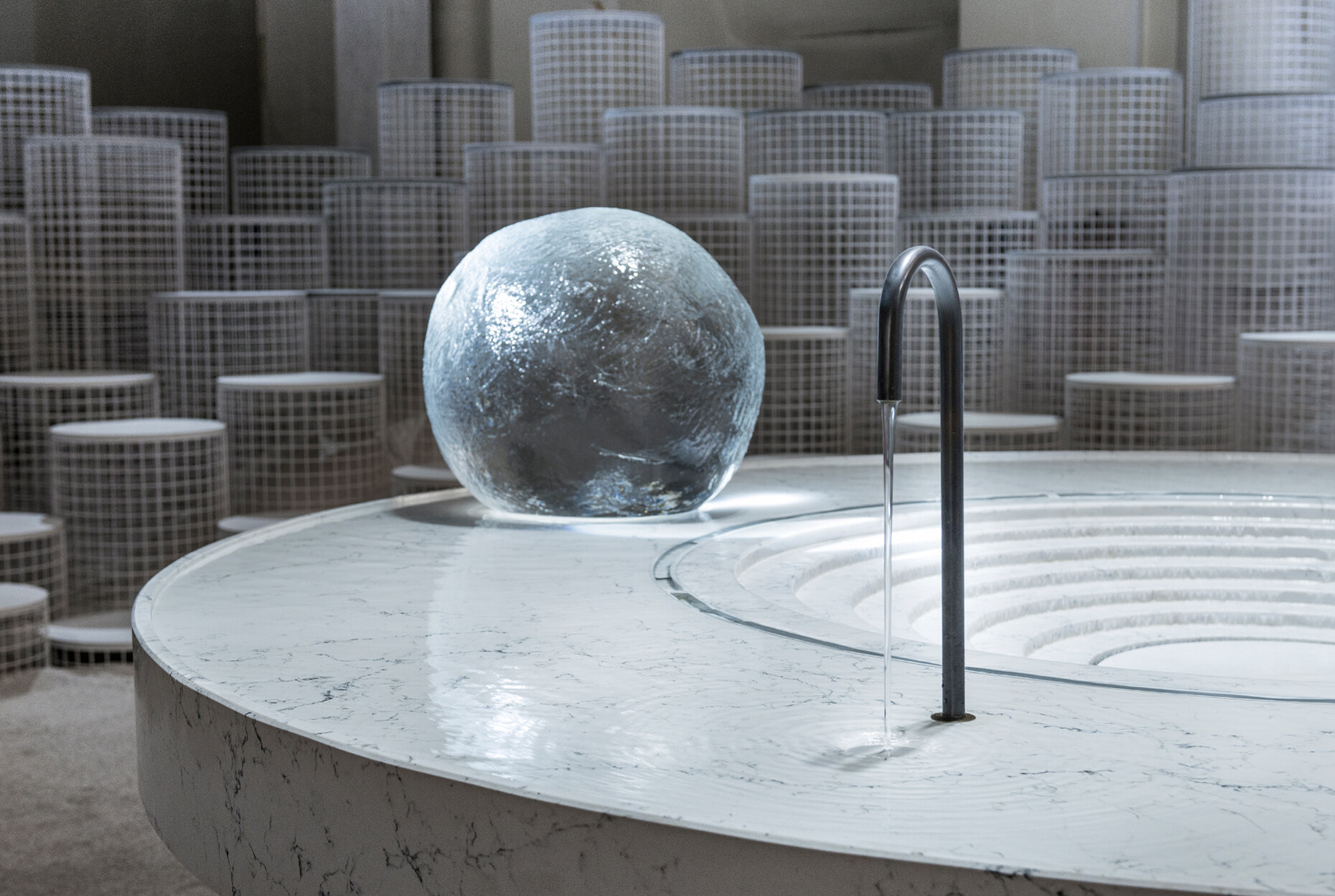SALONE DEL MOBILE 2018
Circulation in the amphitheater
The kitchen island as a central element of cooking and communication: New York design studio Snarkitecture teamed up with Caesarstone, a manufacturer of quartz surfaces, at the Salone del Mobile to create “Altered States”, an installation that celebrates the rich variety and the flexibility of the open kitchen. The result was special for several reasons: The empty Palazzo dell’Ufficio Elettorale di Porta Romana opened its doors to the public for the first time in many years especially for this event. This presented a unique opportunity to experience the historic building, previously used as a university, as a shell that will soon undergo conversion by Piero Lissoni and morph into the Milan Edition Hotel. As soon as visitors entered the courtyard of the magnificent 19th-century building, they were met with three models made of quartz stone from the Caesarstone “Supernatural” collection, based on the shape of small amphitheaters. Inspired by the show character of kitchen islands as a social center, each sculpture presented one of the aggregate states of water: ice, water and steam.
In the interior itself, the round, theater-like structure was opened up into explorable dimensions: Small platforms boasting lightweight steel frames topped with round Caesarstone plates formed seating areas of different heights. In the center of the room stood an altar-like construction, built in layers of quartz, which visitors could explore as they walked around the space and which represented a link between the three states of the element: Two large balls of ice melted slowly with the body of water that carried them, disappearing into the staggered center of the installation and fed ceaselessly by the flow from the taps. Meanwhile, steam regularly filled the room, bathing the installation in a mystical atmosphere. A central top light created light reflections, helping to set the scene for this most elemental of cooking ingredients in all its original forms. “Altered states” aims to prompt designers and architects to reinterpret the kitchen island in the space. Whether it has achieved this is still open to debate, but it was certainly noticeable how time spent in the installation induced an almost meditative effect, reminiscent of the comforting feeling of having arrived that is prompted by taking a seat in the heart of a home.
